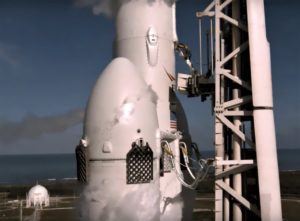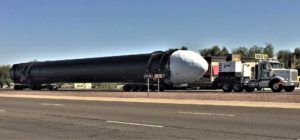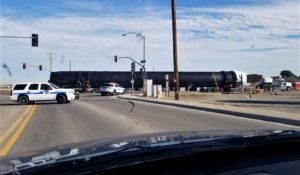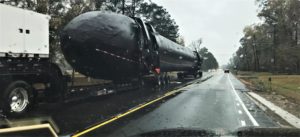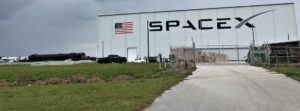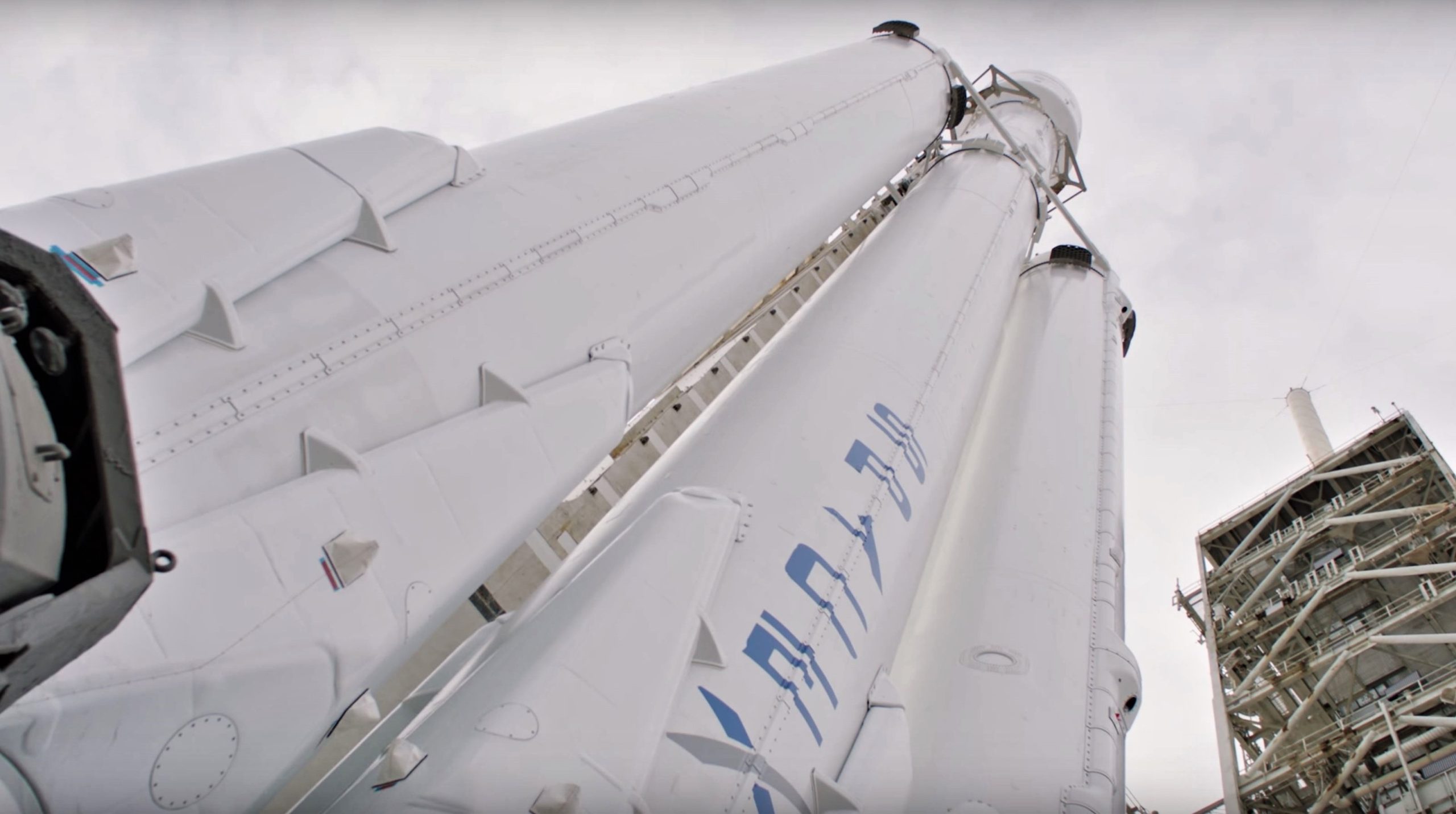
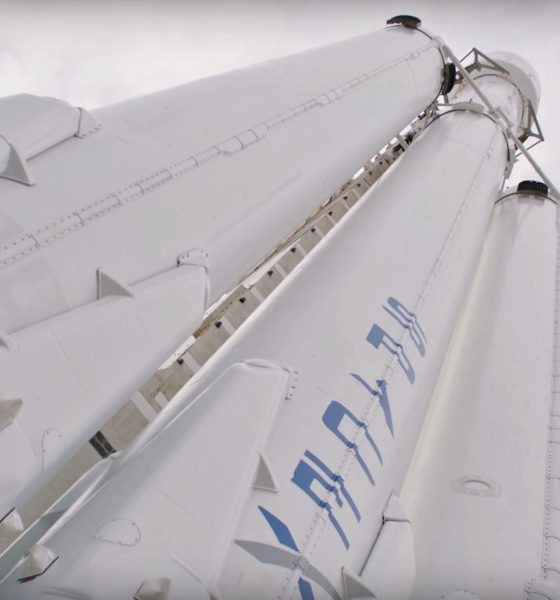
News
SpaceX customer reaffirms third Falcon Heavy mission’s Q2 2019 launch target
Taiwan’s National Space Organization (NSO) has reaffirmed a Q2 2019 launch target for SpaceX’s third-ever Falcon Heavy mission, a US Air Force-sponsored test launch opportunity known as Space Test Program 2 (STP-2).
Set to host approximately two dozen customer spacecraft, one of the largest and most monetarily significant copassengers riding on STP-2 is Formosat-7, a six-satellite Earth sensing constellation built with the cooperation of Taiwan’s NSO and the United States’ NOAA (National Oceanic and Atmospheric Administration) for around $105M. If successfully launched, Formosat-7 will dramatically expand Taiwan’s domestic Earth observation and weather forecasting capabilities, important for a nation at high risk of typhoons and flooding rains.
Formosat-7, the latest generation of the series, is jointly developed by #Taiwan’s National Space Organization and the #US National Oceanic and Atmospheric Administration following an agreement signed in 2010. https://t.co/7hj2ijFutZ
— Asia Times (@asiatimesonline) January 7, 2019
Although Taiwan officials were unable to offer a target more specific than Q2 2019 (April to June), it’s understood by way of NASA comments and sources inside SpaceX that STP-2’s tentative launch target currently stands in April. For a number of reasons, chances are high that that ambitious launch target will slip into May or June. Notably, the simple fact that Falcon Heavy’s next two launches (Arabsat 6A and STP-2) are scheduled within just a few months of each other almost singlehandedly wipes out any possibility that both Heavy launches will feature all-new side and center boosters, strongly implying that whichever mission flies second will be launching on three flight-proven boosters.

To further ramp up the difficulty (and improbability), those three flight-proven Block 5 boosters would have to launch as an integrated Falcon Heavy, safely land (two by landing zone, one by drone ship), be transported to SpaceX facilities, and finally be refurbished and reintegrated for their second launch in no more than 30 to 120 days from start to finish. SpaceX’s record for Falcon 9 booster turnaround (the time between two launches) currently stands at 72 days for Block 4 hardware and 74 days for Block 5, meaning that the company could effectively need to simultaneously break its booster turnaround record three times in order to preserve a number of possible launch dates for both missions.
Look who was waving at passing planes over McGregor today!
A Falcon Heavy side booster on the McGregor test stand for a static fire test. pic.twitter.com/S7af6b0gHk
— NSF – NASASpaceflight.com (@NASASpaceflight) November 18, 2018
If it turns out the USAF is actually unwilling to fly its first Falcon Heavy mission on all flight-proven boosters (a strong possibility) or that that has never been the plan, STP-2’s claimed Q2 2019 target would likely have to slip several months into 2019. This would afford SpaceX more time and resources to build an extra three new Falcon Heavy boosters (two sides, one center), each of which requires a bare minimum of several weeks of dedicated production time and months of lead time (at least for the center core), all while preventing or significantly slowing the completed production of other new Falcon boosters.
The exact state of SpaceX’s Falcon 9 and Heavy production is currently unknown, with indications that the company might be building or have already finished core number B1055 or higher, but it’s safe to say that there is not exactly a lot of slack in the production lines in the first half of 2019. Most important, SpaceX likely needs to begin production of the human-rated Falcon 9 boosters that will ultimately launch the company’s first two crewed Crew Dragons as early as June and August, respectively.
- Falcon Heavy is seen here lifting off during its spectacular launch debut. (SpaceX)
- LZ-1 and LZ-2, circa February 2018. (SpaceX)
- A Falcon Heavy side booster was spotted eastbound in Arizona on November 10th. (Reddit – beast-sam)
- The second Falcon Heavy booster in four weeks was spotted Eastbound in Arizona by SpaceX Facebook group member Eric Schmidt on Dec. 3. (Eric Schmidt – Facebook)
- The second (and third) flight of Falcon Heavy is even closer to reality as a new side booster heads to Florida after finishing static fire tests in Texas. (Reddit /u/e32revelry)
- The next Falcon Heavy’s first side booster delivery was caught by several onlookers around December 21. (Instagram)
If the first Falcon 9 set to launch an uncrewed Crew Dragon (B1051) is anything to go off of, each human-rated Falcon 9 is put through an exceptionally time-consuming and strenuous range of tests to satisfy NASA’s requirements, requiring a considerable amount of extra resources (infrastructure, staff, time) to be produced and readied for launch. B1051 likely spent 3+ months in McGregor, Texas performing checks and one or several static fire tests, whereas a more normal Falcon booster typically spends no more than 3-6 weeks at SpaceX’s test facilities before shipping to its launch pad.
Ultimately, time will tell which hurdles the company’s executives (and hopefully engineers) have selected for its next two Falcon Heavy launches: an extraordinary feat of Falcon reusability or a Tesla-reminiscent period of Falcon production hell?
For prompt updates, on-the-ground perspectives, and unique glimpses of SpaceX’s rocket recovery fleet check out our brand new LaunchPad and LandingZone newsletters!

Investor's Corner
Tesla price target boost from its biggest bear is 95% below its current level

Tesla stock (NASDAQ: TSLA) just got a price target boost from its biggest bear, Gordon Johnson of GLJ Research, who raised his expected trading level to one that is 95 percent lower than its current trading level.
Johnson pushed his Tesla price target from $19.05 to $25.28 on Wednesday, while maintaining the ‘Sell’ rating that has been present on the stock for a long time. GLJ has largely been recognized as the biggest skeptic of Elon Musk’s company, being particularly critical of the automotive side of things.
Tesla has routinely been called out by Johnson for negative delivery growth, what he calls “weakening demand,” and price cuts that have occurred in past years, all pointing to them as desperate measures to sell its cars.
Johnson has also said that Tesla is extremely overvalued and is too reliant on regulatory credits for profitability. Other analysts on the bullish side recognize Tesla as a company that is bigger than just its automotive side.
Many believe it is a leader in autonomous driving, like Dan Ives of Wedbush, who believes Tesla will have a widely successful 2026, especially if it can come through on its targets and schedules for Robotaxi and Cybercab.
Justifying the price target this week, Johnson said that the revised valuation is based on “reality rather than narrative.” Tesla has been noted by other analysts and financial experts as a stock that trades on narrative, something Johnson obviously disagrees with.
Dan Nathan, a notorious skeptic of the stock, turned bullish late last year, recognizing the company’s shares trade on “technicals and sentiment.” He said, “From a trading perspective, it looks very interesting.”
Tesla bear turns bullish for two reasons as stock continues boost
Johnson has remained very consistent with this sentiment regarding Tesla and his beliefs regarding its true valuation, and has never shied away from putting his true thoughts out there.
Tesla shares closed at $431.40 today, about 95 percent above where Johnson’s new price target lies.
News
I subscribed to Tesla Full Self-Driving after four free months: here’s why
It has been incredibly valuable to me, and that is what my main factor was in considering whether to subscribe or not. It has made driving much less stressful and much more enjoyable.

I have been lucky enough to experience Tesla Full Self-Driving for the entire duration of my ownership experience for free — for four months, I have not had to pay for what I feel is the best semi-autonomous driving suite on the market.
Today, my free trial finally ran out, and I had two choices: I could go without it for a period until I felt like I absolutely needed it, or I could subscribe to it, pay $99 per month, and continue to experience the future of passenger transportation.
I chose the latter, here’s why.
Tesla Full Self-Driving Takes the Stress Out of Driving
There are a handful of driving situations that I don’t really enjoy, and I think we all have certain situations that we would just rather not encounter. This is not to say that I won’t ever experience them as someone who has driven a car for 15 years (it feels weird saying that).
I don’t love to drive in cities; I really don’t like driving on I-695 on my way to Baltimore, and I truly hate parallel parking. All three things I can do and have done, all three within the past few weeks, too.
It takes all the stress out of city driving pic.twitter.com/q0SPPrH4HU
— TESLARATI (@Teslarati) December 4, 2025
However, if I can avoid them, I will, and Tesla Full Self-Driving does that for me.
Tesla Full Self-Driving Eliminates the Monotony
I drive to my alma mater, Penn State University, frequently in the Winter as I am a season ticket holder to Wrestling and have been for 16 years now.
The drive to State College is over two hours and over 100 miles in total, and the vast majority of it is boring as I travel on Rt 322, which is straight, and there is a lot of nature to look at on the way.
I am willing to let the car drive me on that ride, especially considering it is usually very low traffic, and the vast majority of it is spent on the highway.
The drive, along with several others, is simply a boring ride, where I’d much rather be looking out the windshield and windows at the mountains. I still pay attention, but having the car perform the turns and speed control makes the drive more enjoyable.
Tesla Full Self-Driving Makes Navigating Easier
Other than the local routes that I routinely travel and know like the back of my hand, I’ve really enjoyed Full Self-Driving’s ability to get me to places — specifically new ones — without me having to constantly check back at the Navigation.
Admittedly, I’ve had some qualms with the Nav, especially with some routing and the lack of ability to choose a specific route after starting a drive. For example, it takes a very interesting route to my local Supercharger, one that nobody local to my area would consider.
But there are many times I will go to a new palce and I’m not exactly sure where to go or how to get there. The Navigation, of course, helps with that. However, it is really a luxury to have my car do it for me.
To Conclude
There was no doubt in my mind that when my Full Self-Driving trial was up, I’d be subscribing. It was really a no-brainer. I am more than aware that Full Self-Driving is far from perfect, but it is, without any doubt, the best thing about my Tesla, to me.
It has been incredibly valuable to me, and that is what my main factor was in considering whether to subscribe or not. It has made driving much less stressful and much more enjoyable.
🚨 How I’ve gotten Tesla Full Self-Driving for free…until now
Watch me subscribe to Tesla FSD! https://t.co/bjK7EEOptR pic.twitter.com/cs5CmN5PdJ
— TESLARATI (@Teslarati) January 7, 2026
News
Tesla Diner becomes latest target of gloom and doom narrative

The Tesla Diner has been subject to many points of criticism since its launch in mid-2025, and skeptics and disbelievers claim the company’s latest novel concept is on its way down, but there’s a lot of evidence to state that is not the case.
The piece cites anecdotal evidence like empty parking lots, more staff than customers during a December visit, removed novelty items, like Optimus robot popcorn service and certain menu items, the departure of celebrity chef Eric Greenspan in November 2025, slow service, high prices, and a shift in recent Google/Yelp reviews toward disappointment.
The piece frames this as part of broader Tesla struggles, including sales figures and Elon Musk’s polarizing image, calling it a failed branding exercise rather than a sustainable restaurant.
This narrative is overstated and sensationalized, and is a good representation of coverage on Tesla by today’s media.
Novelty Fade is Normal, Not Failure
Any hyped launch, especially a unique Tesla-branded destination blending dining, Supercharging, and a drive-in theater, naturally sees initial crowds taper off after the “Instagram effect” wears down.
Tesla makes major change at Supercharger Diner amid epic demand
This is common for experiential spots in Los Angeles, especially pop-up attractions or celebrity-backed venues. The article admits early success with massive lines and social media buzz, but treats the return to normal operations as “dying down.”
In reality, this stabilization is a healthy sign of transitioning from hype-driven traffic to steady patronage.
Actual Performance Metrics Contradict “Ghost Town” Claims
- In Q4 2025, the Diner generated over $1 million in revenue, exceeding the average McDonald’s location
- It sold over 30,000 burgers and 83,000 fries in that quarter alone. These figures indicate a strong ongoing business, especially for a single-location prototype focused on enhancing Supercharger experiences rather than competing as a mass-market chain
It’s not a ghost town lol. The @Tesla Diner still had over 30,000 burger orders and 83,000 fries orders in Q4. The diner generated over $1M in revenue in Q4, a $4M annual run rate, which is more than the average McDonald’s…. pic.twitter.com/XvAGLUqxej
— Sawyer Merritt (@SawyerMerritt) January 4, 2026
Conflicting On-the-Ground Reports
While the article, and other similar pieces, describe a half-full parking lot and sparse customers during specific off-peak visits, other recent accounts push back:
- A January 2026 X post noted 50 of 80 Supercharger stalls were busy at 11 a.m., calling it “the busiest diner in Hollywood by close to an order of magnitude
TESLA DINER 🍔
Frantic!!!
Crazy busy. pic.twitter.com/wMbmr8SFFn
— Rich & Sharon (@HullTeslaModel3) January 4, 2026
- Reddit discussions around the same time describe it as not empty when locals drive by regularly, with some calling the empty narrative “disingenuous anti-Tesla slop.”
When we visited it last week it was packed. We had to wait to enter, get a table and go to the restroom. We were lucky to find a spot to charge.
— Rani G (@ranig) January 4, 2026
Bottom Line
The Tesla Diner, admittedly, is not the nonstop circus it was at launch–that was never sustainable or intended. But, it’s far from “dying” or an “empty pit stop.”
It functions as a successful prototype: boosting Supercharger usage, generating solid revenue, and serving as a branded amenity in the high-traffic EV market of Los Angeles.
